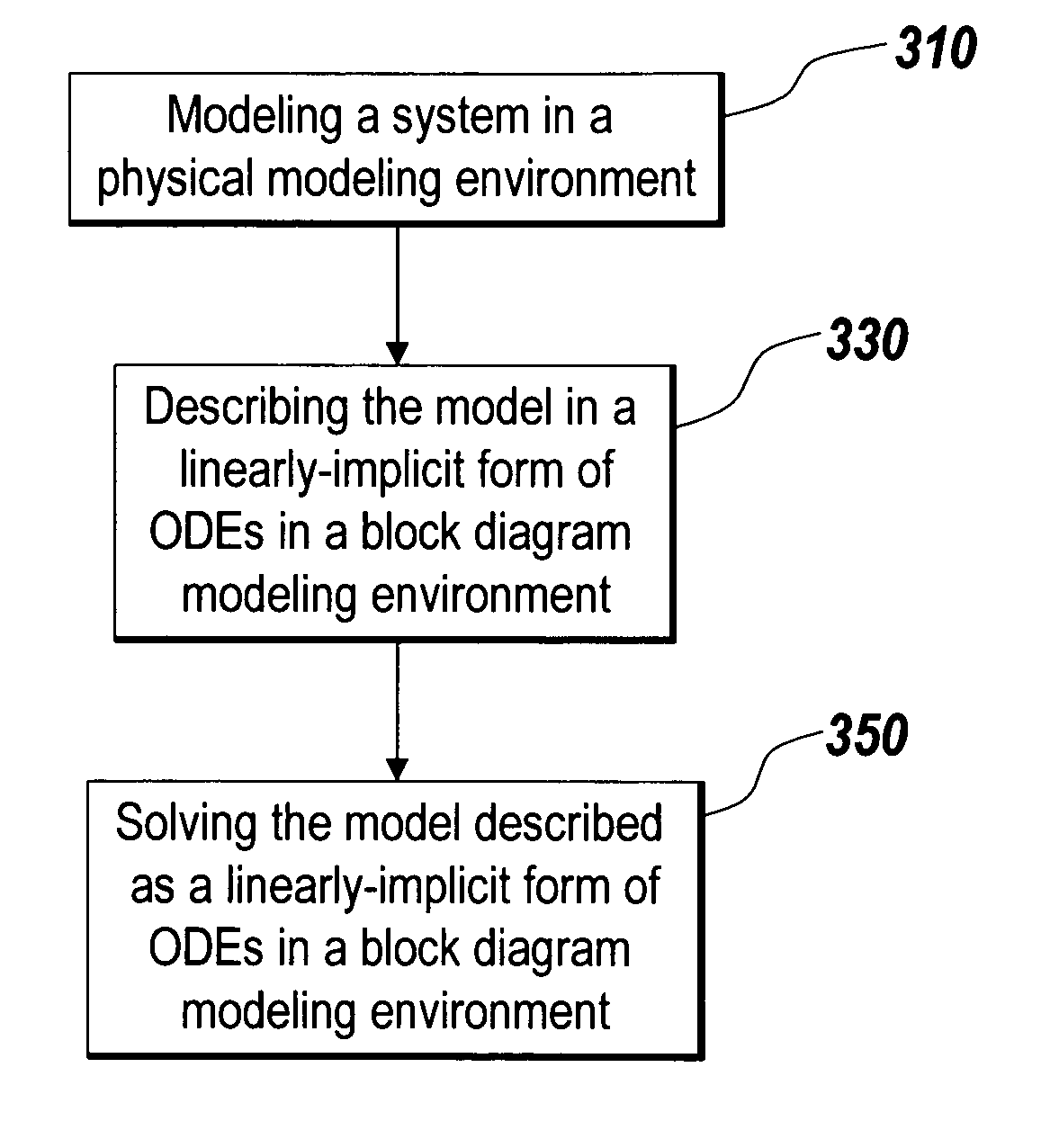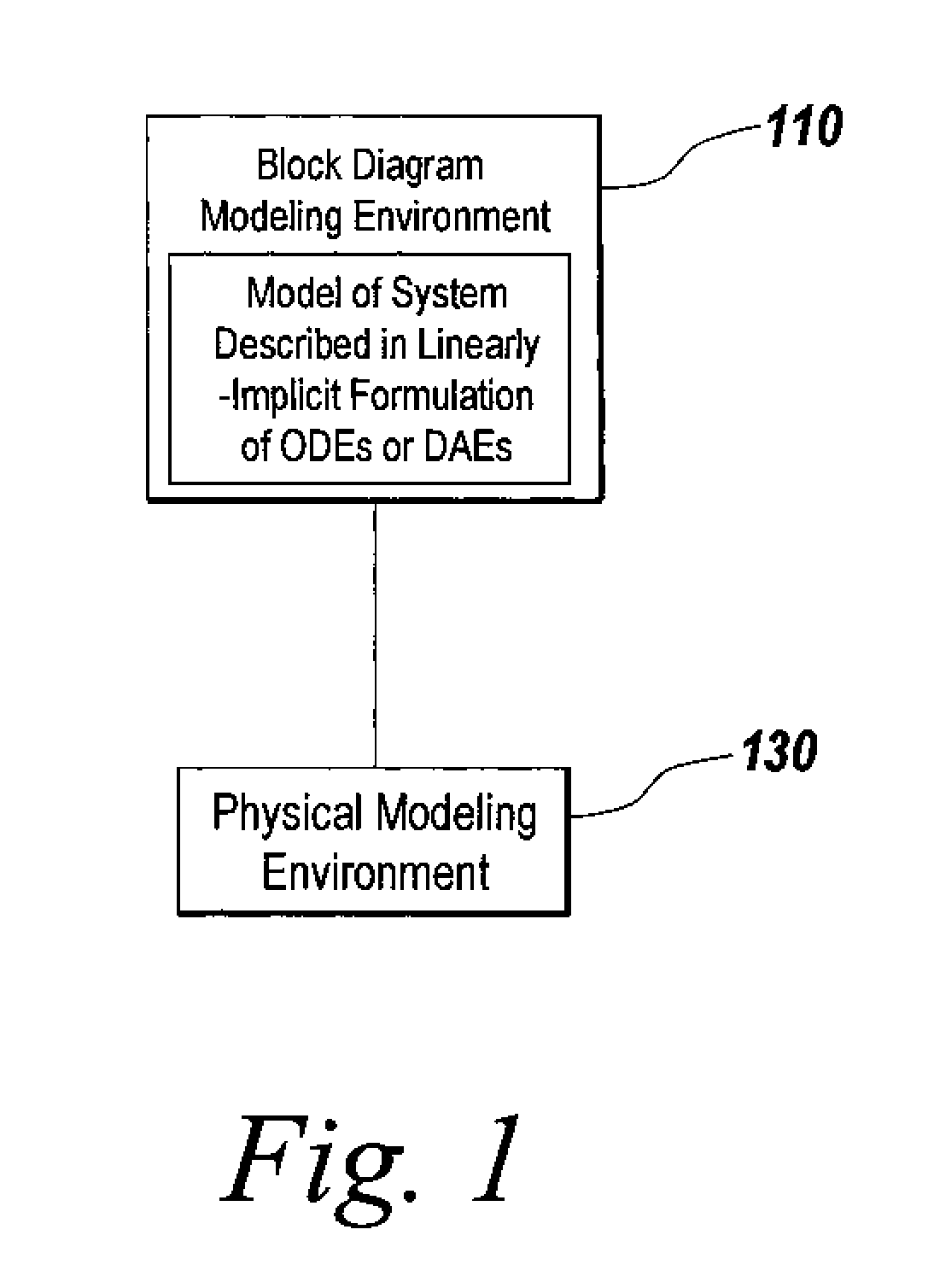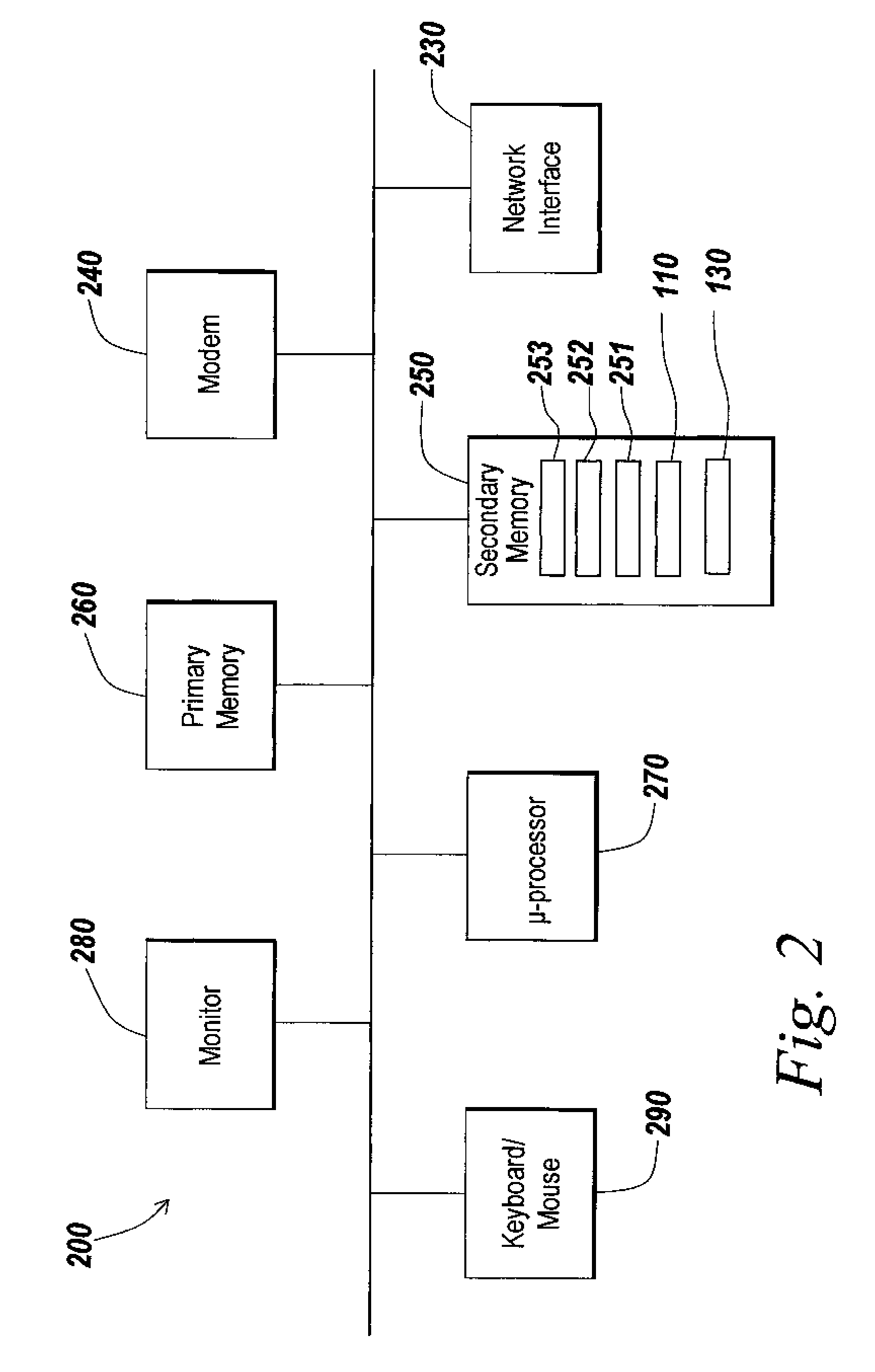Modeling linearly-implicit systems in block diagram modeling environments
- Summary
- Abstract
- Description
- Claims
- Application Information
AI Technical Summary
Benefits of technology
Problems solved by technology
Method used
Image
Examples
Embodiment Construction
[0023]The illustrative embodiment of the present invention concerns modeling and execution of systems in a block diagram modeling environment. Systems are typically modeled as sets of differential, difference, and / or algebraic equations. At any given instant of time, these equations may be viewed as relationships between the system's output response (“outputs”), the system's input stimuli (“inputs”) at that time, the current state of the system, the system parameters, and time. The state of the system may be thought of as a numerical representation of the dynamically changing configuration of the system. For instance, in a physical modeling system modeling a simple pendulum, the state may be viewed as the current position and velocity of the pendulum. Similarly, a signal-processing system that filters a signal would maintain a set of previous inputs as the state. The system parameters are the numerical representation of the static (unchanging) configuration of the system and may be ...
PUM
 Login to View More
Login to View More Abstract
Description
Claims
Application Information
 Login to View More
Login to View More - R&D
- Intellectual Property
- Life Sciences
- Materials
- Tech Scout
- Unparalleled Data Quality
- Higher Quality Content
- 60% Fewer Hallucinations
Browse by: Latest US Patents, China's latest patents, Technical Efficacy Thesaurus, Application Domain, Technology Topic, Popular Technical Reports.
© 2025 PatSnap. All rights reserved.Legal|Privacy policy|Modern Slavery Act Transparency Statement|Sitemap|About US| Contact US: help@patsnap.com



